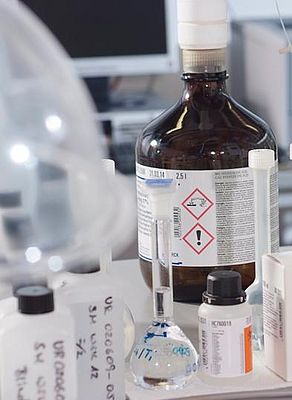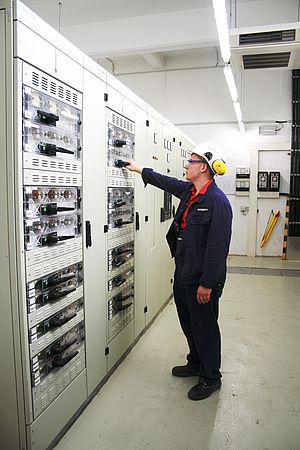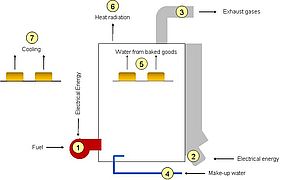Time is now running out for SMEs too. Companies must complete the EU-prescribed registration of chemicals by June 2018 – a tight timeframe within which to implement the complex requirements. The advice of the REACH experts at TÜV SÜD is to become pro-active at an early stage and to involve external service providers to relieve the pressure.
“No data, no market”: the REACH Regulation’s motto sounds ominous not only for small and medium-sized enterprises (SMEs). In 2010, even large companies were only able to comply with the first registration deadline for large substance quantities by investing maximum resources. Now, all chemicals with an annual production of one metric ton or above must also be registered by the end of May 2018. This mainly affects SMEs which manufacture or import the substances predominantly in low tonnage bands. Many are currently shying away from getting to grips with the issue and are putting it on the back burner – thereby overlooking the complexity and lengthiness of the registration process which also takes up an enormous amount of staff resources. Basically: those unable to comply with the deadline will not only lack the necessary product data from 2018 and therefore also the market but potentially the basis for their business as well. This is because substances that have not been registered can then be neither manufactured nor imported within the European Union, meaning a loss in sales and revenue.
The European Union’s REACH regulation on chemicals of 2007 obliges companies to register all chemical substances manufactured in or imported into Europe in the tonnage band 1 - 100 t/a with the European Chemicals Agency (ECHA) by May 2018. In doing so, the responsibility for safe handling of chemical substances is shifted at the same time: manufacturers, importers and downstream users must ensure safe use of the substances. The burden of proof is also reversed. Thus the regulation pursues the aim of providing better protection for consumers and the environment against the risks of hazardous substances. Simultaneously, the intention is also to strengthen the competitiveness of industry within the EU.
More effort than anticipated so far
Companies had to pre-register the substances which they manufactured or imported by December 2008 in order to benefit from the three transitional periods. Even then the number of substances and in turn the work involved was considerably greater than had been anticipated in the run up. The first of three transitional periods in total then expired in autumn 2010. All substances of which at least 1,000 metric tons per year were manufactured or imported had to be registered by this time. Moreover, this first transition period applied to particularly environmentally hazardous substances above a quantity of 100 metric tons per year and to substances which are carcinogenic, mutagenic or toxic for reproduction (CMR substances) above a quantity of 1 metric ton per year.
Almost 4,900 different substances were recorded in approx. 28,000 dossiers across the EU during the first phase. The second registration phase which records all substance quantities of above 100 metric tons per year is now due to expire at the end of May 2013. For this the ECHA is anticipating around 15,000 registrations for approx. 3,900 substances, including approx. 2,900 substances which have not been registered by any company so far. The third and last period for small substance quantities of more than one metric ton per year is now running. It concerns in particular the many small and medium-sized enterprises which manufacture or import chemicals.
It is anticipated that the remaining majority of the substances already preregistered will have to be registered in this phase and the proportion of niche products which have not been recorded so far is particularly high. It is highly probable that this will delay smooth operation of the registration process. So it is already possible to foresee that a registration bottleneck will occur shortly before the period expires in May 2018. Companies that do not have the REACH topic on the agenda in good time will find themselves at a distinct disadvantage.
Special cases for monomers and polymers
The requirements of the regulation are highly complex and will have to be satisfied individually in each company. Using polymers as an example, one can see just how different the consideration of these substances can be. Generally speaking, they are exempt from the registration requirement. However, the REACH definition of a polymer differs from the definition found in the majority of chemical textbooks. According to REACH, a substance is declared to be a polymer if more than 50 percent of its weight is made up of polymer molecules.
A polymer molecule in this case, according to REACH, is a molecule that contains a chain of at least three monomer units. It must have entered into a covalent bond with at least one further monomer unit or any other reactant. In addition, the polymer may only be made up of less than 50 percent of molecules with the same molecular weight. Dimers, trimers and oligomers which have been created from only one monomer do not come under the REACH definition of a polymer although these are occasionally also described as polymers.
Monomers or other reaction partners which are used in the manufacture of polymers must generally be registered in the same way as other chemicals. Even manufacturers or importers of a polymer must also register the monomers if the monomer content exceeds two weight per cent or the total quantity of such a monomer exceeds one metric ton per year. The ECHA has summarized detailed information on this topic in the – legally non-binding – “Guidelines on monomers and polymers”.
Requirements for information and documentation
The documentation effort required for REACH registration must also not be underestimated. The registration dossier for substances above 10 metric tons per year must contain a Chemical Safety Report (CSR). This can easily be several hundred pages thick because the document should describe the safety-related measures for all identified uses of the substance. This is not only a challenge for the manufacturers and importers but for the downstream users in particular. Therefore they too are subject to obligations. They must not only comply with the usage conditions and measures for risk management referred to in the safety data sheet, they should also help to create them. It is in their interest to provide information for this. They are required to continuously adapt the safety data sheets in an ongoing dialogue with the upstream suppliers. Added to this is the fact that they must be translated into all the languages of the EU countries into which the substance is exported.
If, in addition, the substance is classified as hazardous, then REACH demands that the Chemical Safety Report must be further supplemented with what is referred to as an exposure assessment. This should verify for every single use whether, to what extent and under what conditions the environment, employees and consumers are at risk. In this case, the substance’s entire life cycle from manufacture to disposal is relevant. Detailed take-action instructions are required for emergencies in addition to the risk analysis. Depending on the number and variety of uses, exposure assessments can also have a volume of 100 pages or more.
Reduction of financial burdens for SMEs agreed
The effort and the costs involved in the REACH registration are considered to be very high particularly by small and medium-sized enterprises. In some cases, the result might be that the production or import of a substance will be discontinued due to cost reasons or that production will be relocated to non-European countries. The European Commission would like to prevent this and keep these companies competitive in the difficult market situation currently prevailing. For this reason, it reduced the registration fees for SMEs in March. Tiered according to the size of the company, SMEs therefore receive reductions ranging from 35 to 95 percent compared to the standard fees for a registration. Price reductions of 25 to 90 percent are possible for licensing applications. This reduction in fees will only benefit companies with less than 250 employees. Companies with more employees are not deemed to be SMEs according to EU criteria and must continue to pay the standard fees.
Discounts were already in place for SMEs. The previous concessions have merely been raised by an average of five percent. Although this leads to a certain reduction in the financial burdens on the companies, it does not change anything in respect of the high administrative expenses which strain – if not overstrain – the resources of small and medium-sized enterprises. It is necessary to take ECHA guidelines with several thousand pages into consideration and to complete IT forms which can contain over 10,000 individual data fields (e.g. IUCLID, the International Uniform Chemical Information Database). Highly-qualified skilled staff whose pay level is generally above the average for the chemical industry are required for this work.
Time is money
Before companies start on the preparatory work for REACH registration, they should clarify a few basic questions. Particularly in the case of smaller enterprises which produce or import substances in smaller quantities, it is frequently unclear whether this substance will still be relevant for marketing in 2018. It is possible that in five years’ time the quantity of one metric ton per year will not be achieved which means that the substance will then not be subject to registration.
The preparatory work for the REACH process should be started swiftly if it is clear which substances will need to be registered. Although the five year period until expiry of the third registration phase appears to be quite long, it is necessary first of all to gather together all the relevant data or – if not available – to create it for one’s own registration dossier. The company must also establish the IT tools for creating and submitting the dossier. So that all measures are planned and implemented on schedule, even small companies should not pass on nominating a person responsible for REACH who will coordinate all the activities.
Even if several manufacturers and importers submit dossiers on the same substance, each chemical will ultimately only be registered once. Therefore, at one stage in the process, all the manufacturers and importers of a substance will form a joint Substance Information Exchange Forum, SIEF for short. On one hand, this reduces the effort required by the SMEs which mainly cooperate within the forum as co-registrants. On the other hand, however, one should not underestimate the effort required for communication. If a Chemical Safety Report has to be created, the lead registrant can only take into account such uses as have been indicated to him in the forum. It is in the co-registrant’s interest to communicate with the lead registrant. If he fails to communicate his uses, he must either prepare his own Chemical Safety Report or forego the use. In addition, there must be assessment of whether the price for the Letter of Access for registration of the leading registrant is justified.
Safely reaching the finishing line in the REACH marathon
SMEs usually do not have the staff resources to deal intensively with the REACH regulation on chemicals and the requirements associated with it. In most cases, it is impossible because of the level of complexity to establish immediately what consequences and obligations REACH will bring with it in a particular case. Delays or errors during registration may, however, become critical to existence for some companies because trading or manufacturing the relevant substance will ultimately be prohibited. Therefore the experts of TÜV SÜD recommend starting the necessary preparatory work right now.
TÜV SÜD’s medium-sized enterprises initiative, as a REACH service specifically for SMEs, will ensure reasonably-priced and timely registration of chemical substances. Those responsible within the company will then have no need to get to grips themselves with the extensive REACH regulations. There will also be no time-consuming need to learn the IT systems IUCLID and REACH-IT. More importantly, there will be no need to take on additional staff or to train staff specifically for REACH – especially when a large proportion of these staffing capacities will only be needed for a limited period of time. Companies will also gain additional financial security as the service attracts a relatively low annual service charge. It will be invoiced with the overall price at the time of submission. If no registration takes place, no further costs will be incurred. Third-party support is both sensible and advisable because according to ECHA “registration is a marathon not a sprint”. TÜV SÜD’s REACH service will ensure that companies “reach” the finishing line safely in 2018.
Author: Dr. Dieter Reiml, Zertifizierter REACH-Multiplikator, TÜV SÜD Industrie Service GmbH, Munich
REACH registration wave
reaches medium-sized enterprises
- by TÜV Süd Industrie Service GmbH
- July 12, 2013
- 394 views




















